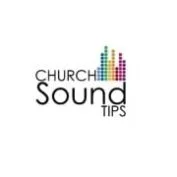It depends on the choir. Not all choirs are the same, and what works well for one might not work for another, such as church choirs or small singing groups. You will also have a mixture of abilities, some people with weaker voices and others who have a stronger voice. However, there are some common guidelines that most choir directors follow to get the best sound when they position their singers.
Positioning the choir members
When it comes to choir formation, four spots tend to be favored by choir directors. The first is the bass section, usually located in the back of the choir. Singers in this section need to be able to sing their parts comfortably and project them well, making it a logical choice for some of the best singers in live choral music.
The second spot choir conductor maye choose is the soprano section, which is the highest-pitched section. Singers in this section need to be able to sing their parts clearly and stay on pitch, so many of the best singers end up here.
The third common choice is the alto section, which tends to sit somewhere in between bass and soprano sections when it comes to height. This position is a good one for a choir because the singers need to be able to sing both low and high, so it allows some of the best singers in a choir who are not basses or sopranos to still stand out.
The final spot is also near the front of the choir, but this time it’s in between all four sections instead of being a part of one. This position is often called the center area, and it is where some of the best singers in a choir typically stand because they are able to interact more with all sections of the choir.
If using amplification, you will also have to consider mic placement and which best mics to use for a choir.
Church choir or worship band
It depends on how many singers you have and what’s happening in the type of choral music that they’re singing. If you need all of your people to sing one part, then typically there will be a large block of them clustered together in the middle of the choir/band larger than any other section, maybe in a circular arrangement. This is where most of the choir/band members will be, with the exception of some soloists and any accompaniment musicians.
If you have people singing different parts (such as soprano, alto, tenor, bass) or more than one part (like in a large choir), then you’ll want to spread them out in a mixed formation so that they can do their jobs without overwhelming each other. You’ll probably want to put any soloists (ones singing by themselves usually for effect) up front, along with the accompaniment musicians who are keeping the beat/keeping everyone on track. You also want your best singers in from of your microphones which are sometimes placed upside down to capture the best audio.
Small community choir
In a smaller choir where it’s just not feasible to have one half of the choir behind and above the other, you’ll probably want to put the people with the highest voices (the sopranos) up front. They can serve as your “big guns” if they’re strong enough to stand out over everyone else; if not, you can bring them up to blend in with the rest of the choir.
You’ll want your mid-range voices (alto and tenor) to be evenly split between both sides of the choir so that they’re equidistant from the sopranos and spread apart just enough so that they won’t get overpowered by any other section. You can do the same with your lower voices (bass and baritone), but you might want to put them somewhere in the middle so that they’re not closer to any one side than they are to another.
Children’s choirs
The biggest consideration for positioning kids, often in a school choir, is that they’re small enough to fit where you tell them to go. This mostly applies when you’re using risers, but it’s still good to take into account when doing things on the ground level.
If you have to put the kids in a choir by themselves, then you’ll probably want them to be up front so that they can see each other. You’ll also probably want them all facing whichever direction is most convenient for your accompaniment; if you’re doing something complicated with an organ or piano, it helps considerably when everyone is looking at the same thing.
If you have the kids in a choir with other sections, then you’ll probably want to put them right in the middle so that they can interact with everyone else. Your youngest members are likely to be your less experienced singers, so putting them near their older counterparts may help them get used to being there. You may also want to put them in the middle for your accompaniment; you can put the adults on either side of them so they won’t feel quite as overwhelmed. Also put some your more experienced singers in the front row, but also some on the back row so that the rest of the group can hear them.
Conclusion
The best singers in a choir stand near or in the center of their choir, depending on how many sections are involved. If it is a solo, then the singers stand up front with accompaniment. If it is a choir, the best singers stand near or in the center of their choir and any accompaniment should be behind them. This positioning is good for everyone involved and works well for most choral ensembles.


Leave a Reply